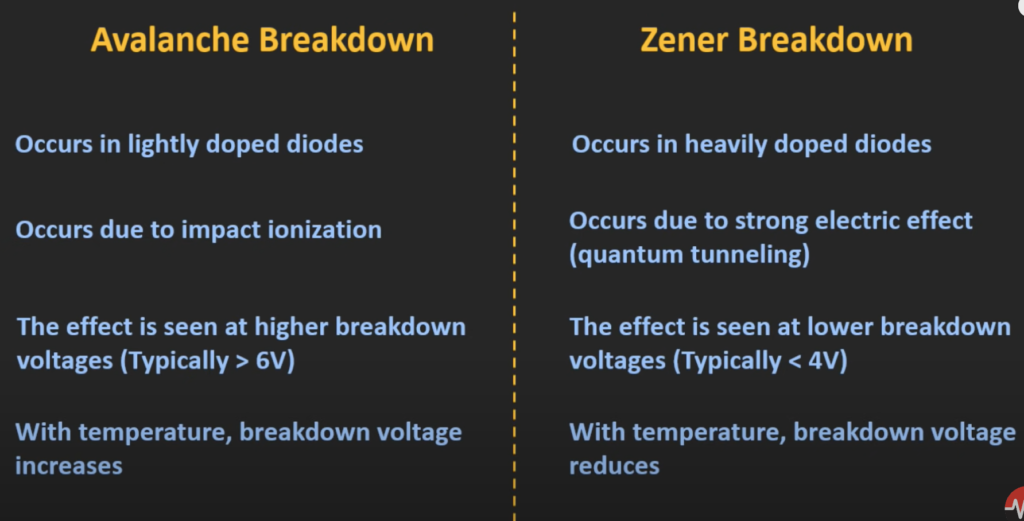In the breakdown region of operation, the effect due to which it occurs is known as the avalanche effect.
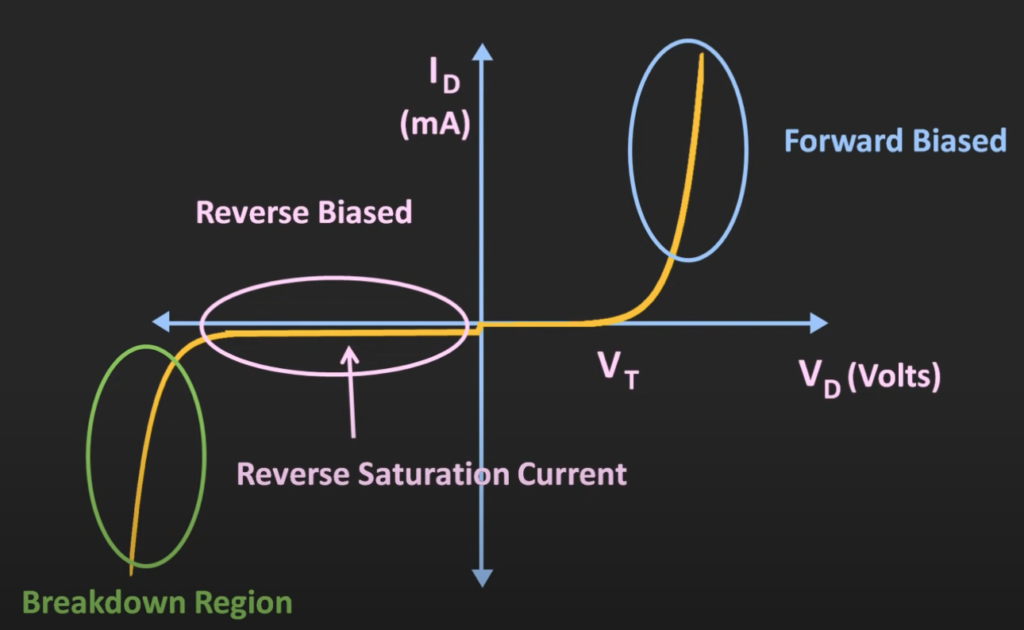
Avalanche Effect
As we know, in the reverse bias condition, the current is caused by the flow of the minority charge carriers. As the applied reverse voltage increases, the width of the depletion area will increase meaning that the amount of immobile ions will increase causing the electric field to be stronger. This stronger electric field will accelerate the minority charge carriers allowing them to move more quickly through the deplesion region. While moving, these free charge carriers can collide with the silicon atoms.
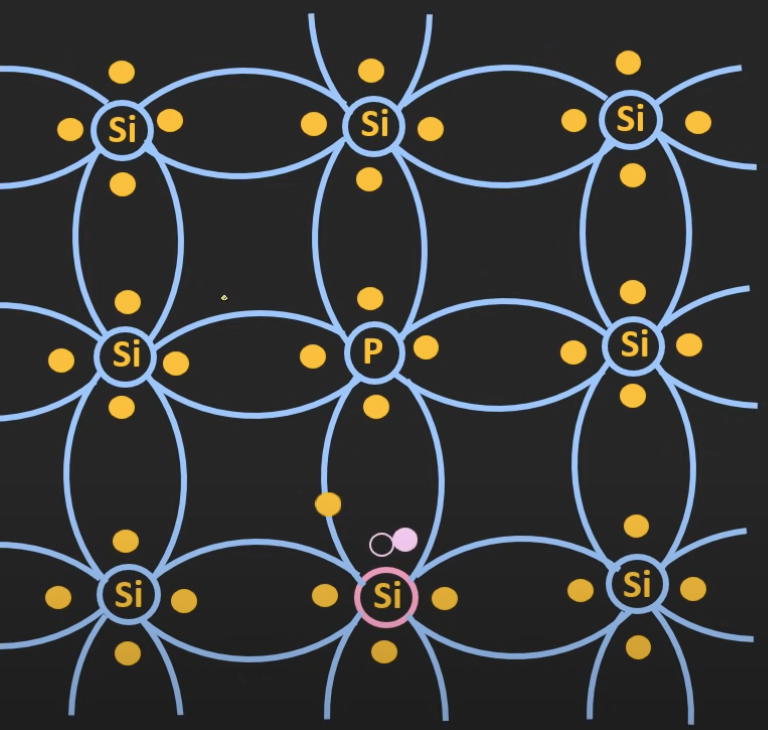
Once the applied voltage reaches the breakdown voltage, the kinetic energy of the charge carriers will be enough to knock off the valance electron of the silicon atoms. These electrons that are knock off can collide with and knock off valance electrons of other silicon atoms. Due to these collisions, the number of free charge carriers in the depletion region increases drastically causing a sudden jump in the reverse saturation current. The voltage after which this avalanche effect occurs is the breakdown voltage.
Zener Diode
Normally, diodes should avoid operating in the breakdown region, but the zener diode is meant to be used in the breakdown region. However, in the Zener diode, the breakdown mechanism differs from that of the normal diode.

Zener Breakdown Effect
Unlike the normal diodes, the p and n-type regions of the Zener diodes are heavily doped meaning that the number of impurities in these regions will be more and the free charge carriers in both regions will be more.
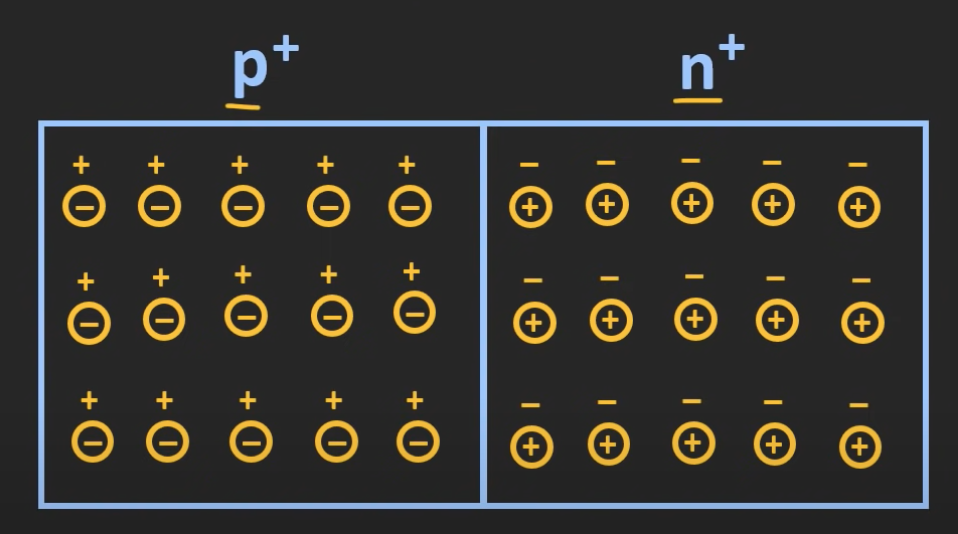
Due to this heavy doping of the material, the width of the depletion region will be much smaller. However, there will be more immobile ions in this region and a stronger electric field than the normal diode. When the reverse biased voltage is applied, the external electric field will also be added on to the built-in electric field. At some point, the electric field will be strong enough to knock off the valance electrons of the silicon atoms.
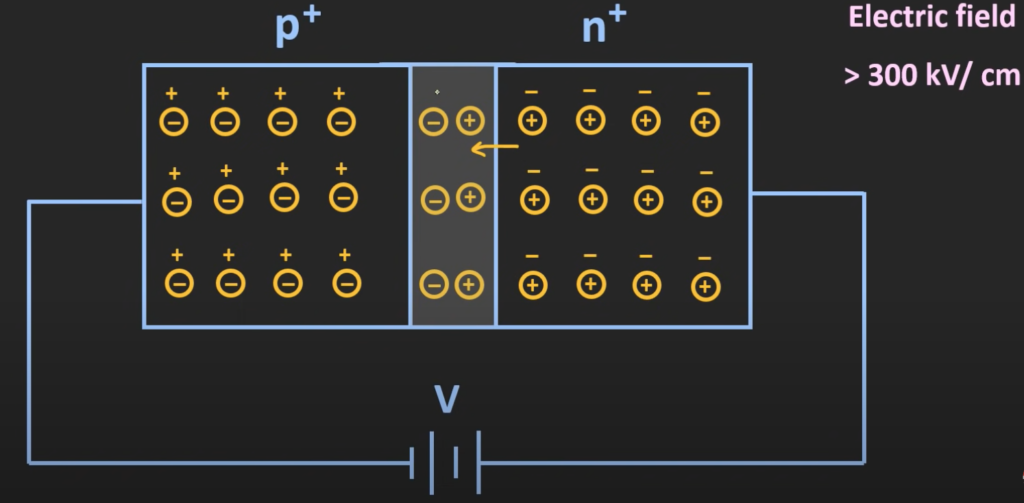
Since many charge carriers are generated, suddenly a lot of current will start flowing in the reverse direction.
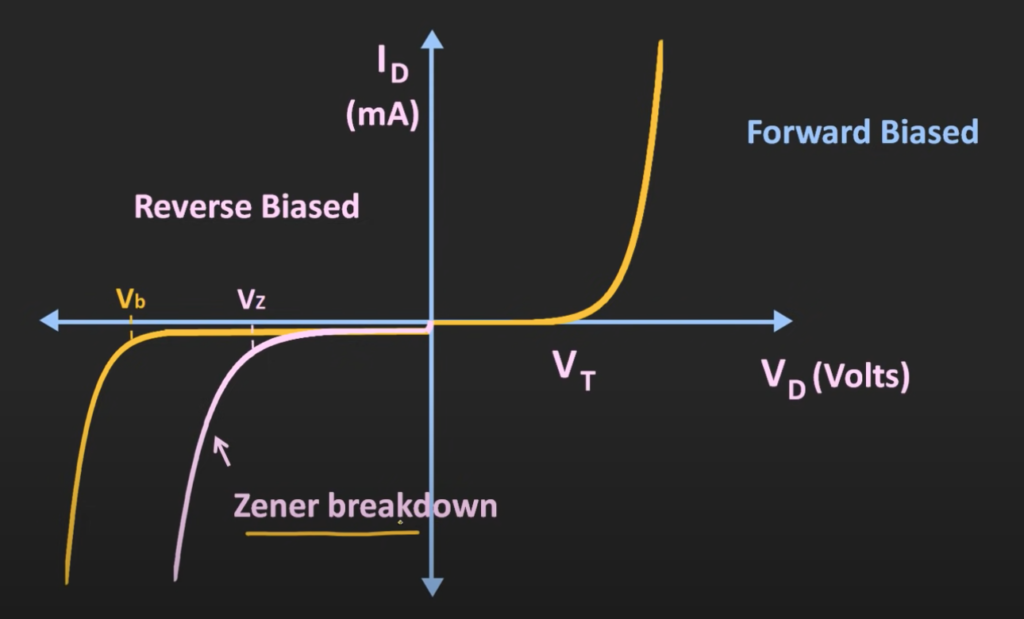
As shown in the graph, a huge increase in current corresponds only to a small increase in the voltage applied. Because of this property, the Zener diode is used as a voltage regulator.
Avalanche Effect & Zener Breakdown Effect in Zener Diode
When the breakdown voltage is less than 4 volts, the Zener effect is predominant. On the other hand, when the breakdown voltage is more than 6 volts, the avalanche effect is predominant. Between these two values, both effects are seen.
Effect of Temperature
For the diode where the Zener breakdown effect is predominant (breakdown voltage < 4v), it has a negative temperature coefficient, meaning that the breakdown voltage will reduce as the temperature increases. In the case of the diode where the avalanche effect is predominant (breakdown voltage >6V), it has a positive temperature coefficient, meaning that as the temperature increases, the breakdown voltage will also increase.
Zener Breakdown Effect & Temperature
In a Zener breakdown effect, the additional charge carriers are generated by the electric field. As temperature increases, more electron-hole pairs will get generated, so, a less electric field can generate the same amount of additional charge carriers. Thus the required breakdown voltage is reduced.
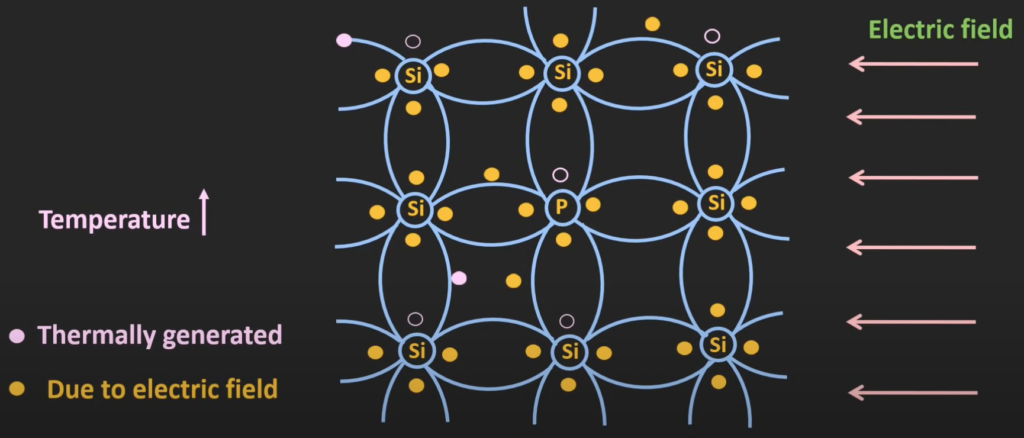
Avalanche Breakdown Effect & Temperature
In the Avalanche breakdown, the additional charge carriers are generated by impact ionization. As temperature increases, the silicon atoms start vibrating, the mean collision path reduces and the time required between the two collisions will reduce. Due to that the electrons would not be able to gain sufficient energy so they will need a stronger electric field to accelerate them, thus more external voltage is needed.
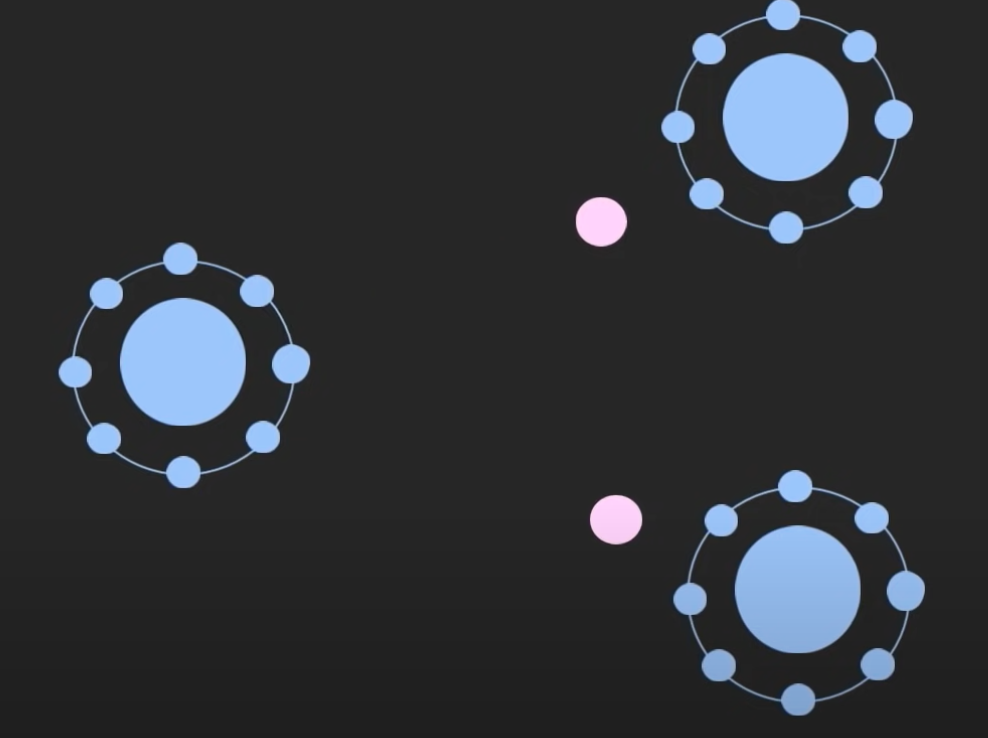
Summary Avalanche VS Zener
